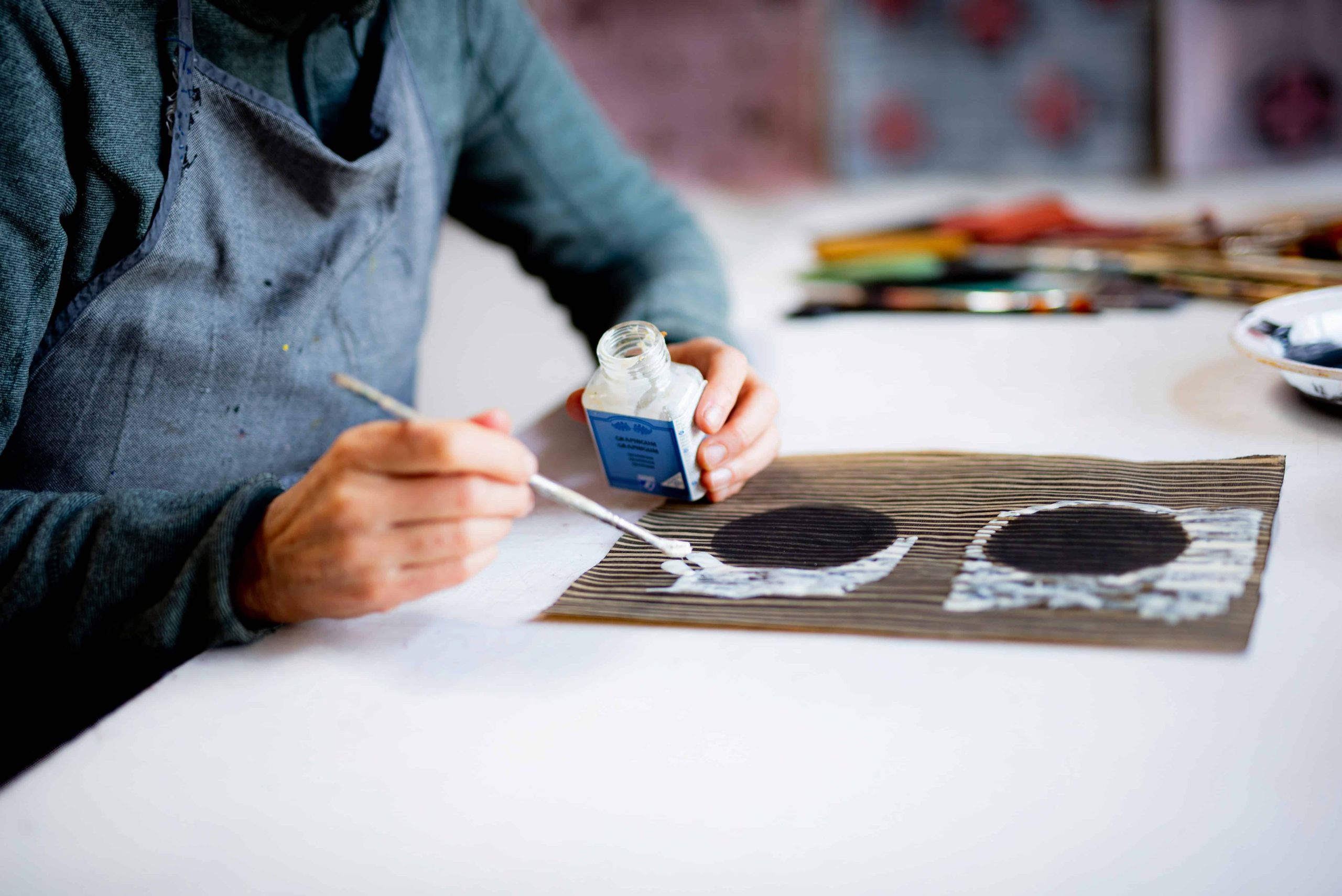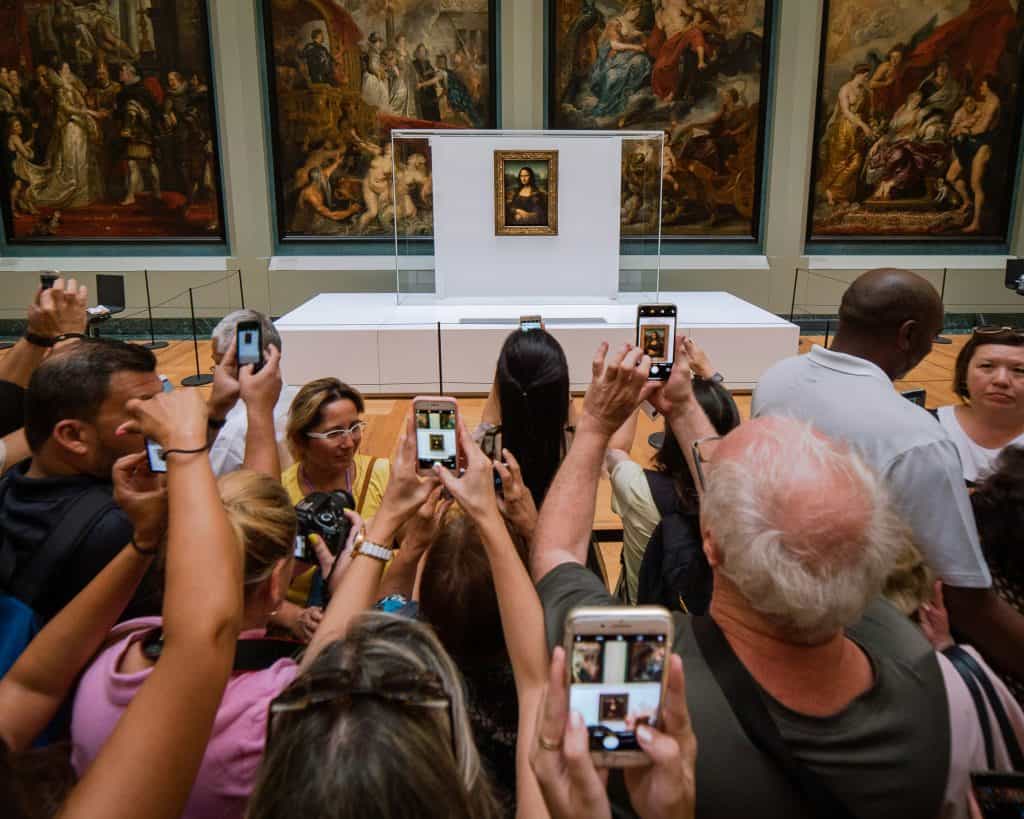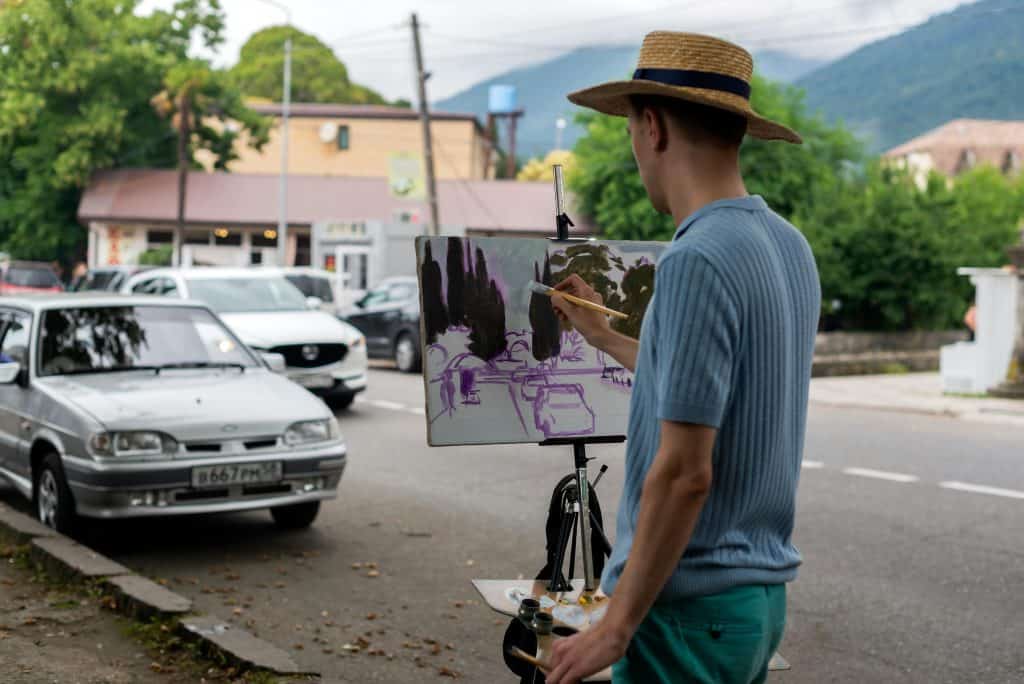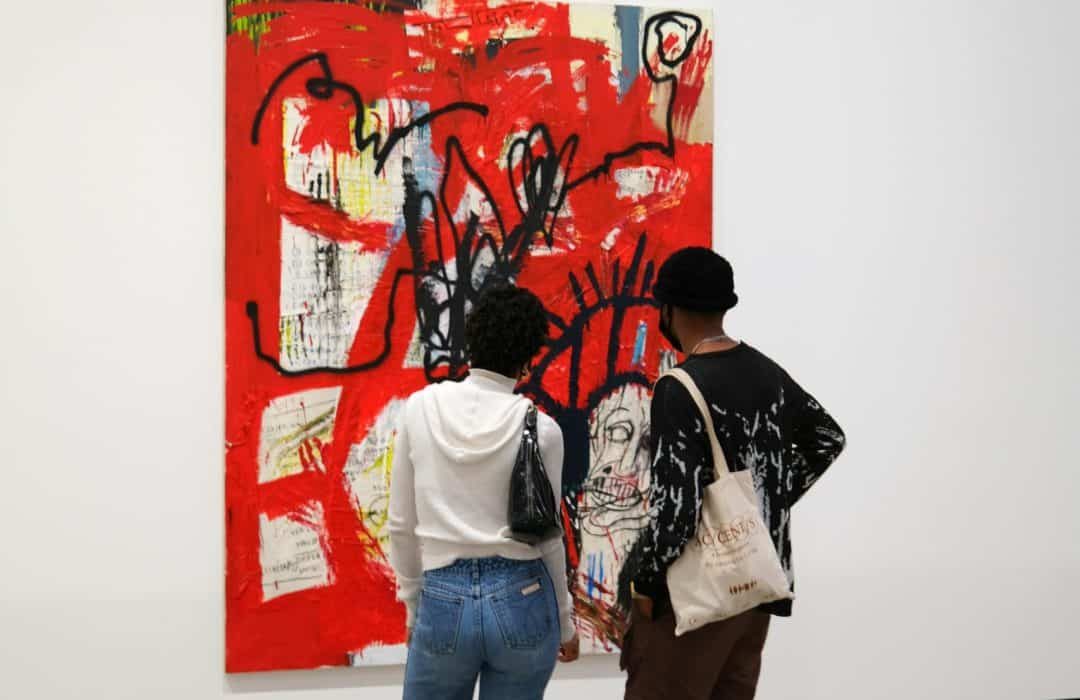
06 Apr Artistic Interpretations of Cultural Identity
Art serves as a powerful lens through which individuals explore, express, and celebrate their cultural identities. From traditional practices to contemporary perspectives, artists from various backgrounds infuse their creations with personal narratives, symbols, and techniques deeply rooted in their cultural heritage. This article delves into the profound relationship between art and cultural identity, highlighting its significance and impact across generations. Cultural identity encapsulates the unique combination of traditions, beliefs, language, and customs that shape individuals and communities. It serves as a foundational element of self-awareness and belonging, influencing how people perceive themselves and interact with the world around them. Art, as a universal language, plays a pivotal role in articulating and exploring cultural identity, offering a platform for introspection, expression, and dialogue.
Exploring Cultural Identity through Art

Photo by laura adai
Subject Matter
Artists draw inspiration from various aspects of their cultural heritage to weave intricate narratives and evoke emotional resonance. Through their work, they take account into:
Depictions of Traditional Practices
Depictions of traditional practices serve as windows into the soul of a culture, offering a vibrant canvas upon which the intricacies and nuances of societal customs and beliefs are vividly portrayed. Through the careful application of brushstrokes, sculptural finesse, or other artistic techniques, creators skillfully capture the very essence of rituals, ceremonies, and the seemingly mundane yet profoundly meaningful activities that form the fabric of everyday life within a society. From the exuberant rhythms of tribal celebrations to the solemn reverence of religious rites, and even the quiet dignity found in the execution of daily chores, these depictions serve as portals through which viewers can immerse themselves in the richness of cultural heritage. Each stroke of the artist’s hand breathes life into scenes that might otherwise fade into obscurity, ensuring that age-old traditions are not only preserved but also celebrated, cherished, and passed down through the generations as cherished treasures of collective memory and identity.
Incorporation of Mythological Figures
Mythology and folklore stand as timeless reservoirs of inspiration, weaving tales that transcend time and space to offer profound insights into a culture’s beliefs and values. Artists draw upon these rich narratives, skillfully integrating mythological figures into their works of art. From the majestic gods and goddesses of ancient pantheons to the enigmatic creatures and heroes of epic sagas, these figures not only captivate the imagination but also serve as powerful symbols, imbued with layers of meaning and significance. Through their artistry, creators illuminate the intricate relationship between myth and reality, inviting audiences to explore the depths of human experience and the mysteries of the cosmos.
Addressing Historical Events
In the wake of historical upheavals, art emerges as a potent medium through which societies confront their past traumas, injustices, and triumphs. With brush strokes laden with emotion or sculptures wrought from the depths of collective memory, artists bear witness to the complexities of history, offering poignant reflections on the human condition. Through their creations, they give voice to the silenced, challenge prevailing narratives, and foster a sense of collective remembrance and resilience. From the harrowing tales of oppression and resistance to the triumphs of liberation and reconciliation, these artistic expressions serve as monuments to the resilience of the human spirit, inspiring future generations to confront the challenges of the present with courage and empathy.

Photo by Mika Baumeister
Artistic Techniques and Styles
The techniques and styles employed by artists are deeply intertwined with their cultural upbringing and artistic traditions. They incorporate:
Traditional Art Forms
Traditional art forms encompass a vast array of creative practices rooted in cultural heritage and craftsmanship. Within this realm, artists draw inspiration from time-honored crafts like weaving, pottery, and wood carving. These age-old techniques serve as both a source of inspiration and a foundation for contemporary artistic expression. When artists incorporate traditional crafts into their contemporary works, they engage in a delicate dance between the past and the present. Through their craftsmanship, they pay homage to ancestral traditions, recognizing the skill and artistry of previous generations. However, they also imbue these age-old techniques with fresh perspectives and modern sensibilities, infusing them with new life and relevance.
In doing so, artists create a seamless bridge that spans across generations and cultures, connecting the rich tapestry of the past with the dynamic landscape of the present. This fusion of tradition and modernity not only preserves cultural heritage but also revitalizes it, ensuring that it remains vibrant and meaningful in today’s world. By honoring and reinventing traditional art forms, artists contribute to the ongoing evolution of cultural expression. They celebrate the legacy of the past while embracing the opportunities and challenges of the future, enriching our collective understanding of art and identity in the process. In essence, traditional art forms serve as both a testament to our shared history and a canvas for our ever-evolving creativity.
Specific Color Palettes and Symbolism
Within cultural contexts, colors and symbols carry profound significance, serving as vehicles for narratives, emotions, and communal aspirations. Each hue and symbol is laden with layers of meaning, reflecting the rich tapestry of a community’s history, beliefs, and experiences. Artists leverage these intricate associations to infuse their creations with depth and resonance, weaving intricate narratives that resonate deeply with their audience and evoke a sense of collective identity.
Subversion of Tradition
A cadre of innovative creators fearlessly ventures beyond the confines of conventional norms. These artists embark on a journey of reinterpretation, boldly breathing new life into traditional forms that have long-defined cultural expression. Through their groundbreaking work, they challenge established paradigms, stirring viewers to question entrenched notions surrounding culture, identity, and heritage. By subverting tradition, these intrepid artists disrupt the status quo, injecting a sense of urgency and vitality into the artistic discourse. They refuse to be bound by the constraints of the past, instead harnessing its essence to forge new paths of exploration and discovery. Through their creative endeavors, they beckon audiences to embark on a transformative journey—one that transcends the boundaries of time and tradition.
In daring to reimagine the familiar, these artists catalyze conversations that resonate far beyond the confines of the gallery walls. They confront the inherent fluidity of cultural expression, challenging viewers to confront the complexities of tradition and modernity, the past and the present, the individual and the collective. In doing so, they invite us to explore the intersections where innovation and tradition converge, where the echoes of the past reverberate against the backdrop of the future. Through their visionary artistry, these creators inspire us to embrace change, to question assumptions, and to reimagine the world around us. They remind us that the true power of art lies not only in its ability to reflect our reality but also in its capacity to shape it. In the hands of these trailblazing artists, tradition becomes a catalyst for transformation, inviting us to journey boldly into the unknown, discover new dimensions of meaning, and chart our course amidst the ever-shifting currents of cultural evolution.

Photo by Anastasia Lashkevich
Impact and Significance
Artistic interpretations of cultural identity hold profound implications for individuals and society, including:
Identity Formation
As a means of self-expression and introspection, art is vital to the development of personal identities. Through interacting with many artistic mediums, such as literature, visual arts, and performing arts, people may discover and honor their distinct viewpoints, cultural history, and life experiences. People who engage in creative undertakings frequently feel more connected to their heritage, customs, and values, which enhances their feeling of self-worth and belonging. Art, whether it be in the form of music, narrative, or visual representations, enables people to traverse the intersections of race, ethnicity, gender, sexual orientation, and other parts of their lived experiences and embrace the complexity of their identities.
Cultural Awareness
Art serves as a powerful medium for promoting cultural awareness and understanding among diverse audiences. Through exposure to different artistic traditions, narratives, and aesthetics, people gain insights into the rich tapestry of human cultures across the globe. Whether exploring ancient civilizations through museum exhibits, attending multicultural performances, or engaging with contemporary artworks, individuals develop empathy, respect, and appreciation for cultural differences. Artistic expressions challenge preconceived notions and stereotypes, encouraging viewers to explore unfamiliar perspectives and broaden their worldviews. By embracing cultural diversity through art, communities foster cross-cultural dialogue, celebrate shared humanity, and build bridges of mutual respect and cooperation.
Social Dialogue
Art functions as a catalyst for social dialogue, encouraging critical reflection and collective action on pressing social issues. Artists often use their creative platforms to challenge prevailing narratives, amplify marginalized voices, and advocate for social justice and equality. Through provocative exhibitions, public installations, and performance art, artists confront stereotypes, address systemic injustices, and spark conversations about pressing concerns such as racism, inequality, environmental degradation, and human rights abuses. Art promotes inclusivity by creating spaces for diverse voices to be heard and valued, fostering mutual understanding and solidarity across communities. By engaging with art as a tool for social change, individuals and societies confront uncomfortable truths, envision alternative futures, and work towards building more just and equitable societies for all.

Photo by Mike Von
Conclusion
Artistic interpretations of cultural identity serve as powerful conduits for self-expression, social dialogue, and collective memory. Artists, drawing from traditions, mythology, and historical events, weave intricate narratives that resonate with audiences, bridging the past with the present and inviting us to explore the dynamic intersections of tradition and innovation. Through their creative endeavors, they challenge norms, celebrate diversity, and shape the way societies perceive themselves and engage with the world. Furthermore, art’s impact extends beyond individual expression, fostering cultural awareness, promoting empathy, and sparking critical conversations about pressing social issues. By embracing cultural diversity and confronting uncomfortable truths, art becomes a catalyst for positive change, uniting communities and inspiring a shared vision of a more inclusive and equitable future. In essence, art reaffirms the intrinsic value of cultural heritage and celebrates the rich tapestry of human experiences, reminding us that our differences are not barriers but rather sources of strength and resilience.
Key Takeaways
- Art as Cultural Mirror: Art serves as a reflection of cultural identity, incorporating traditional practices, mythological figures, and historical events to express the nuances of diverse societies.
- Evolution of Tradition: Artists innovate by blending traditional art forms with contemporary styles, subverting norms to explore new dimensions of cultural expression and identity.
- Impact on Society: Artistic interpretations of cultural identity foster identity formation, promote cultural awareness, and stimulate social dialogue, contributing to a more inclusive and empathetic society.
FAQs
How does art contribute to the exploration of cultural identity?
Art provides a platform for artists to delve into various aspects of their cultural heritage, including traditional practices, mythological figures, and historical events. Through artistic expression, individuals explore their identities and share narratives that resonate with their communities.
Why is the fusion of tradition and modernity important in artistic interpretations of cultural identity?
The fusion of tradition and modernity allows artists to honor ancestral practices while adapting them to contemporary contexts. This dynamic approach ensures cultural relevance and vitality, bridging generational gaps and fostering continuity in cultural expression.
What role does art play in promoting social dialogue and understanding?
Art catalyzes social dialogue by challenging stereotypes, amplifying marginalized voices, and addressing pressing social issues. Through exhibitions, performances, and installations, artists provoke critical reflection and inspire collective action toward building more just and equitable societies.
Spotlighting essential “Workshops and Training for Contemporary Artists” designed to enhance the skills and professional development of contemporary artists, fostering creativity, innovation, and artistic growth.

